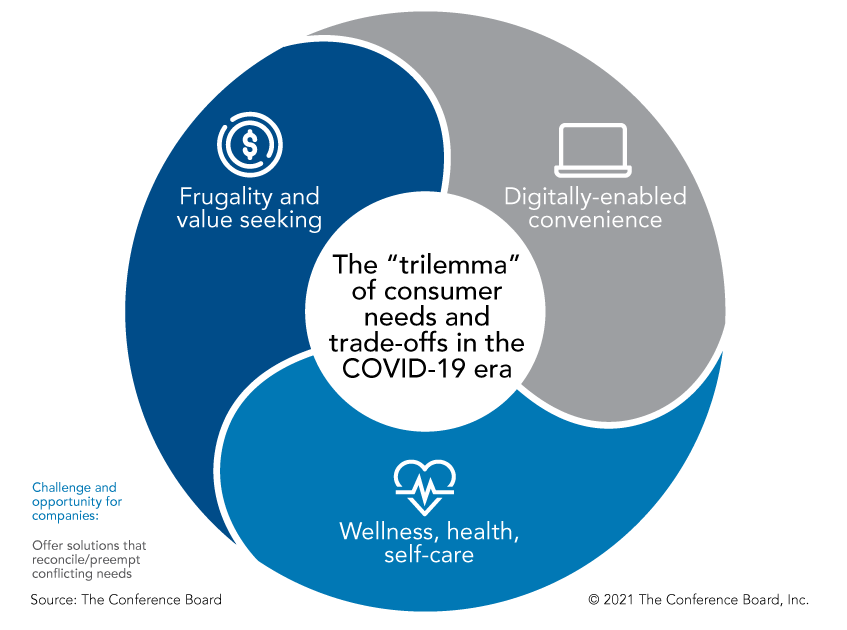
April 06, 2021 | Chart

Of all the new, changed, or reinforced consumer behaviors COVID-19 has fostered, three stand out as major trends companies should consider in their marketing and innovation strategies:
Some of these preferences may conflict. For example, the digital convenience of online shopping may be more expensive due to delivery costs and conflict with frugality goals. Pursuing a healthy lifestyle—including diet, gym membership, exercise equipment, and more—can also be prohibitively costly.
The challenge and opportunity for companies is to innovate with novel solutions that address the full constellation of consumers’ needs, while preempting conflicts between priorities. This is true for telehealth, which addresses all three needs—digital convenience, self-care, and frugality—while walk-in clinics, another less expensive alternative to traditional health care, address the latter two.
Even as vaccines usher in the return to a more normal life, companies are likely to see consumer behaviors and priorities continue to adjust for a while until a new equilibrium establishes itself. For example, during the pandemic, shoppers may have been more willing to pay for online shopping. They also spent more time at home, which made receiving deliveries easy, preempting theft and storage issues. Spending more time at home has changed eating habits to more snacking.
Looking ahead, people may become more cautious about spending. And once they spend more time outside the home, commuting to work and school, they may alter their habits yet again. Among other behaviors, this may affect the online ordering of groceries, take-out meals, and other items, as well as eating, workout, and dressing habits.
How can your company navigate—and leverage—this shifting terrain? Read our new report, Consumer Behaviors and Business Opportunities in the COVID-19 Era, for a complete road map.
May 12, 2025 | Article
